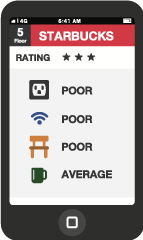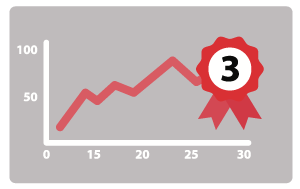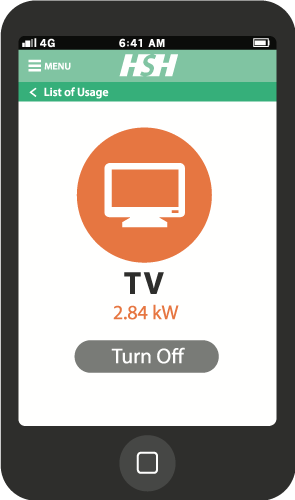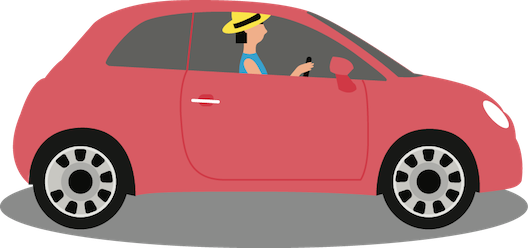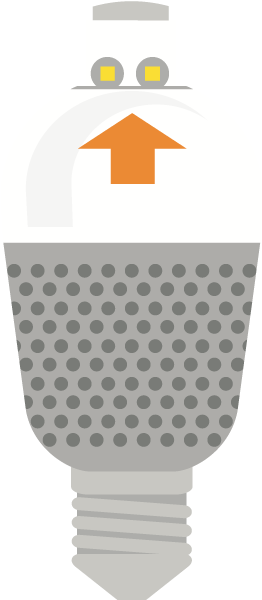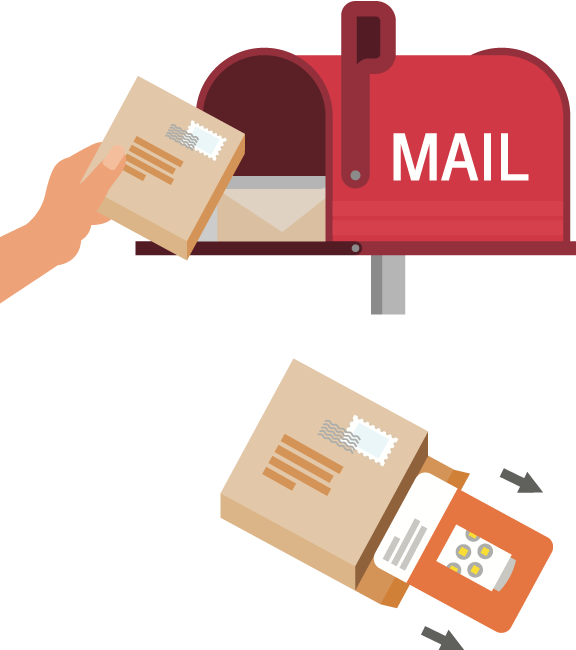Welcome to Designing Energytopia
“Can we live the way we want and also be energy efficient?”
Because everybody has a need for energy, Designing Energytopia begins by posing the above question.
Then, the Design Thinking body of knowledge is applied to create a conceptual framework and tools for exploring and understanding different views on energy use, and for designing and creating energy-efficient ideas that satisfy users’ needs and improve their quality of life.
Find out what kind of energy user you are
Learn more about Energy and Design Thinking
Start creating energy ideas to satisfy users’ needs
Energy in Everyday Life
Before you get down to the business of creating your own
energy-efficient ideas, we invite you to learn more about Energy in Everyday Life: past, present and future.
When did living stop being dependent on sunrise and sunset? How and when did energy-saving awareness campaigns begin to play a role in daily life? What are the energy challenges we are facing today and likely to face tomorrow? And how can we use creativity and knowledge as tools to help us imagine a new future for energy use and turn it into reality?
THE PAST
For most of human history, energy saving was never an important issue, because the world was unable to get enough energy supply to meet its needs. All that changed with the arrival of the electric light bulb following the advent of electricity. Not only did electricity become an important energy system that everyone could rely on, it also completely changed the way people lived their daily life.
Once people had become accustomed to the convenience of having energy at their disposal, when an energy shortage occurred – because of war, an oil crisis, or more recently, global warming – they were prompted to do something unprecedented in the history of the human race: Start raising awareness about, and campaigning for, energy saving, and designing and creating myriad ways to combat energy limitations.
THE PRESENT
Today’s energy challenge has less to do with war, oil shortage or global warming than with the world’s addiction to energy. This addiction fuels us from the moment we wake up until the moment we fall asleep, and grows increasingly powerful at a time when major energy resources like fossil fuels are running out.
As globalization, IT advances and borderless transportation systems all consume vast amounts of energy, and the world economy and society are both driven by energy, will it be enough to secure the future and save the country, the world and the environment if we continue to rely on advertising and PR campaigns alone to raise awareness about the need to “save energy”?
The Future
In designing a future world, the challenge lies in getting people to change their views from saving and using less energy to understanding that energy efficiency is the new fuel that will drive the world towards sustainability while the quest for new energy innovations and renewable energy sources continues.
If we think more, do more and imagine more, will we find more ways to generate and store energy from other sources? Or will there be new forms of innovation and service that will allow us to simultaneously generate and save energy in our daily life?
1879: Electricity Changed Life
The revolutionary shift from candles to light bulbs triggered the start of the modern way of life, in which electricity constitutes a capital cost. In the late 19th Century, Thomas Alva Edison’s electric lamp provided nighttime lighting for American homes, redefining living by taking away limitations hitherto imposed by the day/night cycle. The success of Edison’s invention led to the development of a direct-current electrical supply system catering to households in New York. From then on, modern cities began to develop along the new power grid, leading to the building of skyscrapers, department stores, amusement parks and cinemas to fulfill the lifestyle needs of people around the world.

On October 21, 1879, Thomas Alva Edison (1847 - 1931) and the staff at his Menlo Park, New Jersey research lab conducted the first successful experiments with a carbon-filament lamp which burned for 40 hours. That success led Edison to start a business designing electrical appliances, which in turn led to enormous demand for electricity and made electricity the major energy system in every home to this day.

A man with a far-reaching vision, in 1878 Edison founded the Edison Electric Light Company to develop a direct-current system with the goal of supplying electricity to households in New York. This instruction placard for an Edison electric light tells us about a big change in the daily life of people at the time: Light now came with just one turn of the wall switch.
1914 – 1945: Creativity from Constraints
During World War I (1914 – 1918), wartime resource constraints led to the first wave of energy-saving concepts, which continued through World War II (1939 – 1945). The war efforts consumed vast amounts of energy, prompting many European countries and the United States to adopt Daylight Saving as an energy-saving measure. First adopted by Germany in 1916, the Daylight Saving policy involved adjusting the clock backward or forward by 1 hour to account for seasonal sunrise and sunset variances. This has the effect of making people reduce their electricity use and take better advantage of sunlight. As wartime shortages began to affect the daily life of the general public, new goods and services catering to the highly rationed lifestyles began to appear. Beginning in 1941, American women could use ‘Liquid Stockings’ leg makeup to replace nylon stockings, which became very hard to obtain because the bulk of the country’s nylon supply went toward making military clothing and weapons packs.

Woman’s desire for beauty at a time when clothing was rationed led to such services as this one at a U.S. shoe store, where women could get their legs painted to look stocking-smooth. “No more ladders! We paint your stockings on your legs,” went the slogan.
Photo credit: flickr.com/photos/foxtongue

Senate Sergeant at Arms Charles P. Higgins turns forward the Ohio Clock in the U.S. Capitol following the U.S. Congress’ 1918 adoption of Daylight Saving Time. Today, the Daylight Saving policy is still in place on several continents and comes into effect when seasons change.

This World War I-era poster urged the U.S. government to adopt daylight saving as a wartime energy-saving measure: “Uncle Sam, your enemies have been up and are at work on the extra hour of daylight – when will you wake up?”
1956: New Lifestyle Brought by Electrical Appliances
Beginning in the mid-1950s, the return to energy abundance led to a boom for the electrical appliances industry. Single-purpose appliances were invented to cater to every facet of people’s daily routine: hair dryer, vacuum cleaner, record player, refrigerator, oven, etc. The pro-consumption mentality that became the norm in modern living is epitomized in the Live Better Electrically campaign, launched by General Electric (GE) in 1956 to promote the use of household appliances. GE also worked with 180 electrical industry players and 300 utilities providers throughout the U.S. to instill an “Electrical Consciousness” in the American public and promote it as a quality of life index

This 1955 vintage poster by the U.S. Independent Electric Light and Power Company shows that in the mid-20th Century, the benchmark for achieving the “American Dream” was the number of household electrical appliances one owned, and that no one wanted to be seen as one of the electricity have-nots.
Photo credit: Sally Edelstein (envisioningtheamericandream.com)

Part of the “Live Better Electrically” (LBE) campaign, this advertisement was published in the October 1958 issue of Better Home and Garden magazine. The campaign was launched nationally in 1956 by the U.S. electrical industry to increase demand for electricity and electrical appliances. In 1957, the Medallion Homes program was launched, under which a home considered the apex of modern, all-electric living would be awarded a “gold medallion”.
Photo credit: flickr.com/photos/mrbill
1973 – 1974: Living with Energy Shortages
Energy shortages returned in the 1970s. In October 1973, the Arab-Israeli War broke out. This led to an Arab oil embargo, which triggered the world’s first oil crisis. Many countries re-imposed electricity- and oil-conservation measures. In the U.K., the government limited industry and business access to electricity to just 3 days a week. In the U.S., highway lighting was cut back and warning signs for motorists driving at night began to spring up. The soaring oil prices also led to the decline of the American muscle cars and opened the way for Japanese and European compact models to break into the American market. The oil crisis also led to chaos at the pumps, as some gas stations would serve only regular customers or those with appointments.

Gasoline dealers in Oregon displayed a sign explaining the Flag Policy during the oil crisis of winter 1973 - 74. The green flag meant the station offered gas to all customers. The yellow flag meant only commercial vehicles would be served. A red flag meant the station was out of gas altogether.

An American man and his son posted a warning sign on their car to scare away would-be gas stealers during the oil crisis of 1974. Thefts of gasoline from cars parked in secluded areas had become a new social phenomenon.

To mark the 40th anniversary of the first oil crisis, U.S. car magazine Automotive News published in its October 2013 issue a survey of auto-industry changes stemming from the crisis. One of those changes was the fall of the American muscle cars. Soaring oil prices caused consumers to switch to compact, three- or five-door European or Japanese models with small, gas-saving engines, cars that were ideal for both people-carrying and cargo-hauling.
1992: Energy Becomes a Global Agenda
In the early 1990s, energy became a global issue. Burning fossil fuels such as oil, coal and natural gas generates the so-called greenhouse gases, which destroy ozone layers in the atmosphere and constitute the major cause of global warming. In 1992, the world community joined together for the first time to find solutions to the global energy and environmental crises. The United Nations Conference on Environment and Development, also known as Earth Summit, held in Rio de Janeiro, Brazil, produced the conclusion that “nothing less than a transformation of our attitude and behavior would bring about the necessary changes”. A few years into the new millennium, energy and climate change became hot issues after former U.S. Vice President Al Gore made the disastrous effects of man-made climate change one of his central themes in the 110-minute-long 2006 documentary film An Inconvenient Truth.
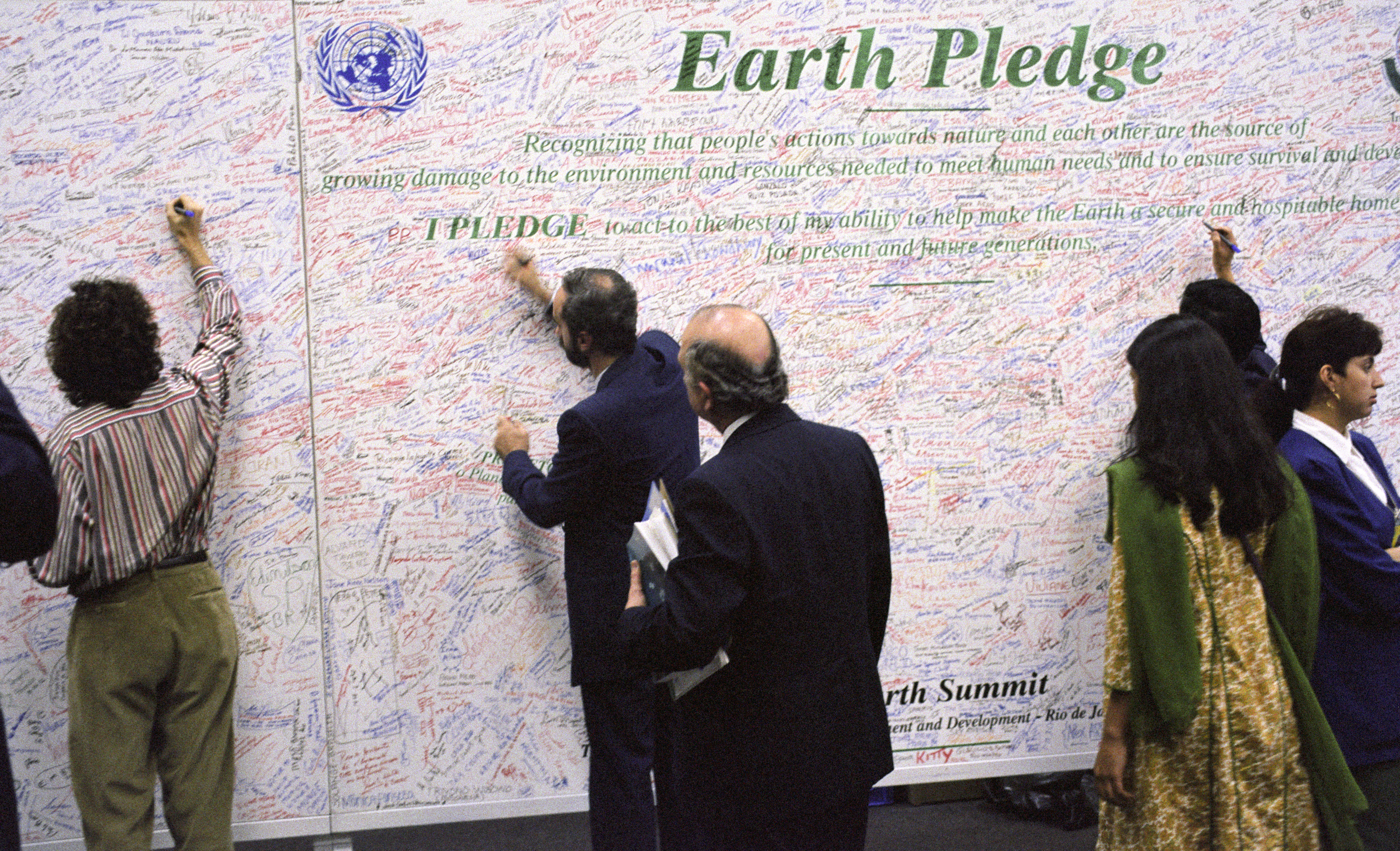
In one of the most memorable images from the 1992 Earth Summit, hundreds of world leaders signed a pledge that said: “Recognizing that people’s actions toward nature and each other are the source of growing damage to the environmental resources needed to meet human needs and ensure survival and development, I PLEDGE to act to the best of my ability to help make the Earth a secure and hospitable home for present and future generations.”
Photo Credit: United Nation Media (unmultimedia.org)
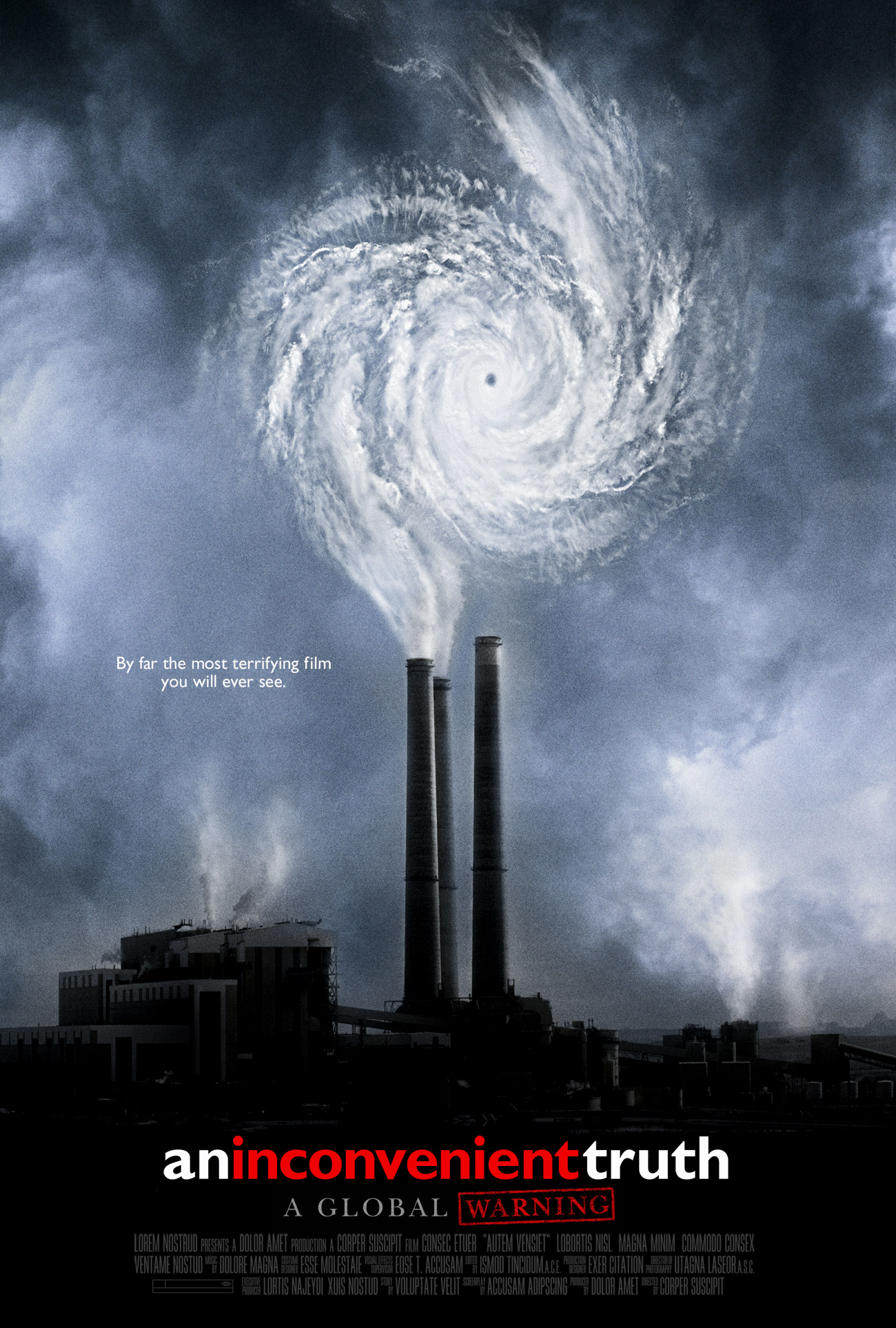
In 2006, the full-length documentary film An Inconvenient Truth woke the world up to the reality of climate change as a global threat that needs to be addressed with the cooperation of all sectors. The film is about former U.S. vice president Al Gore’s efforts to educate the public about the complexity of the issue as well as the impact of global warming that the world is now facing.
Energy Addiction Goes Global
The world consumes energy 24 hours a day, 7 days a week. Consumers have become addicted to their smartphones and tablets thanks to developments in networks and software applications which make it possible to connect to the Internet anytime, anywhere – at home, at work or in public places. According to “Thailand Internet User Profile 2015,” a survey of 10,434 Internet users by the Electronic Transactions Development Agency (ETDA), the majority of those surveyed use the Internet at work (43.2%) and during their commutes (26%). They engage in a wide variety of online activities including spending time on social networks (82.7% ), listening to the radio or playing games (42.3%), shopping (25.8%) and carrying out financial transactions (21.6%).

A "Thailand Internet User Profile 2015" survey also shows that the falling price of mobile devices coupled with rapid development of networks and applications to facilitate more diverse usage has made smartphones the No. 1 primary Internet access devices among Thais, who use their smartphones an average of 5.7 hours per day.

Head-down society. 2015 is the first year in which Thai internet users stay connected 24/7 via their smartphones, according to survey results. The top 3 activities that Thai internet users engaged in via their mobile devices are: using social networks such as Facebook, Instagram and Line, searching for information and reading online newspapers.
Energy Consumption Outpaces Production
Today, much of the world’s energy resources is being wasted as demand continues to rise. Oil demand for global transport could reach 23.4 billion barrels per year by 2030, compared to 15.4 billion barrels in 20014, according to the International Energy Agency (IEA). IEA’s estimate is in accordance with the global increase in the number of personal cars to 1.2 billion in 2015 from 850 million in 2010. As energy consumption continues to grow unchecked, the world’s fuel supplies look likely to be outstripped by demand even if additional reserves are discovered in the future.

If global oil demand continues to rise unchecked, available supply will not be able to keep up. As new reserve discovery takes place very infrequently nowadays, global supply cannot keep pace with demand. Today, the global oil consumption rate outpaces new reserve discovery by more than 3 times.
Travel and Transport Become Borderless
In our globalized world, manufacturing, trading and international shipping via land, sea and air are all poised for growth. Today, the transport sector consumes as much as 50% of all fossil fuels, the world’s major source of energy, According to a 2015 report by the International Air Transport Association, air transport is one of the main engines driving the global economy. In 2014, global air shipments totaled 51.3 million tons or USD 6.8 trillion in value, amounting to 35% of the total value of global trade. The growth in air transport is estimated to be 4.1% annually.

Not only does air cargo continues to grow, but the number of global air travelers is estimated to rise from 3.3 billion in 2014 to 7.3 billion by 2034, according to the International Air Transport Association (IATA)
Travel and Transport Become Borderless
The global digital economy relies on information technology to control and connect the flows of information between different parts of the world. The management of everything from traffic and transport to telecommunications, finance and investment involves a wide array of electronic devices – desktop computers, smartphones, tablets, electronic cloud-computing networks – all of which consume vast amounts of energy. In The Cloud Begin With Coal: Big Data, Big Network, Big Infrastructure, and Big Power, Mark P. Mills, CEO of Digital Power Group, estimates that IT and communications systems now consume almost 10% of the world’s electricity supply, or all the electricity it took to light the entire world in 1985. According to the same report, cloud computing consumes an average of 1,500 terawatt-hour a year, which is equivalent to the combined electricity generating capacities of Germany and Japan.

Thousands of servers stand in neat rows at a Google information center, each one sporting different-colored cables for easy identification. Located all over the world, these information centers are the main engines driving Google’s search and email services, YouTube and Google Plus. They consume energy 24 hours a day, 7 days a week, to power their operating systems and cool the servers. It is estimated that each square foot in an average information center consumes 100-200 times more electricity than the same-size space in a modern office building.
“Save” Energy, Help the Country and the Government?
According to Thailand Creative & Design Center ’s Survey of Discourse on Energy Sharing in Public Spaces and Media-Assisted Campaigns, an analytical study of energy-awareness campaigns in spaces belonging to businesses, government agencies and educational institutions and in department stores and public areas around Bangkok, said campaigns tend to focus on saving water, electricity and oil and on achieving the maximum possible reduction in energy use, with the purported goal of helping the organization, the government and the country. These campaigns utilize traditional media such as banners, stickers, posters and billboards to target audiences who are already aware of the campaigns’ messages and conscious of what they aim to achieve. But today, this type of campaigning is no longer enough to cause behavior change regarding energy use. It may be time to put out different information, adopt different forms or methods for energy communication, or even design new energy innovations to ensure a successful shift to an energy-efficient society.

As shown by these photos from TCDC’s Ssurvey of Survey of Discourse on Energy Sharing in Public Spaces and Media-Assisted Campaigns, the most common discourse links saving electricity (via reduced use of lights, elevators, air conditioning, power outlets, etc.) with everything from improving health to saving the world to helping the organization and the country.
Heat = Energy
What if our excess body heat was never wasted? At Stockholm Grand Central Station in Sweden, heat exchangers in the ventilation system convert the excess body heat of commuters passing through the station into hot water, which is then pumped into the heating system of a nearby building to keep it warm. The brainchild of Stockholm real estate company Jermhusen, the system lowers the energy costs of the office block by as much a 25% during winter.
Learn more about Stockholm Grand Central Station’s human body heat harvesting system
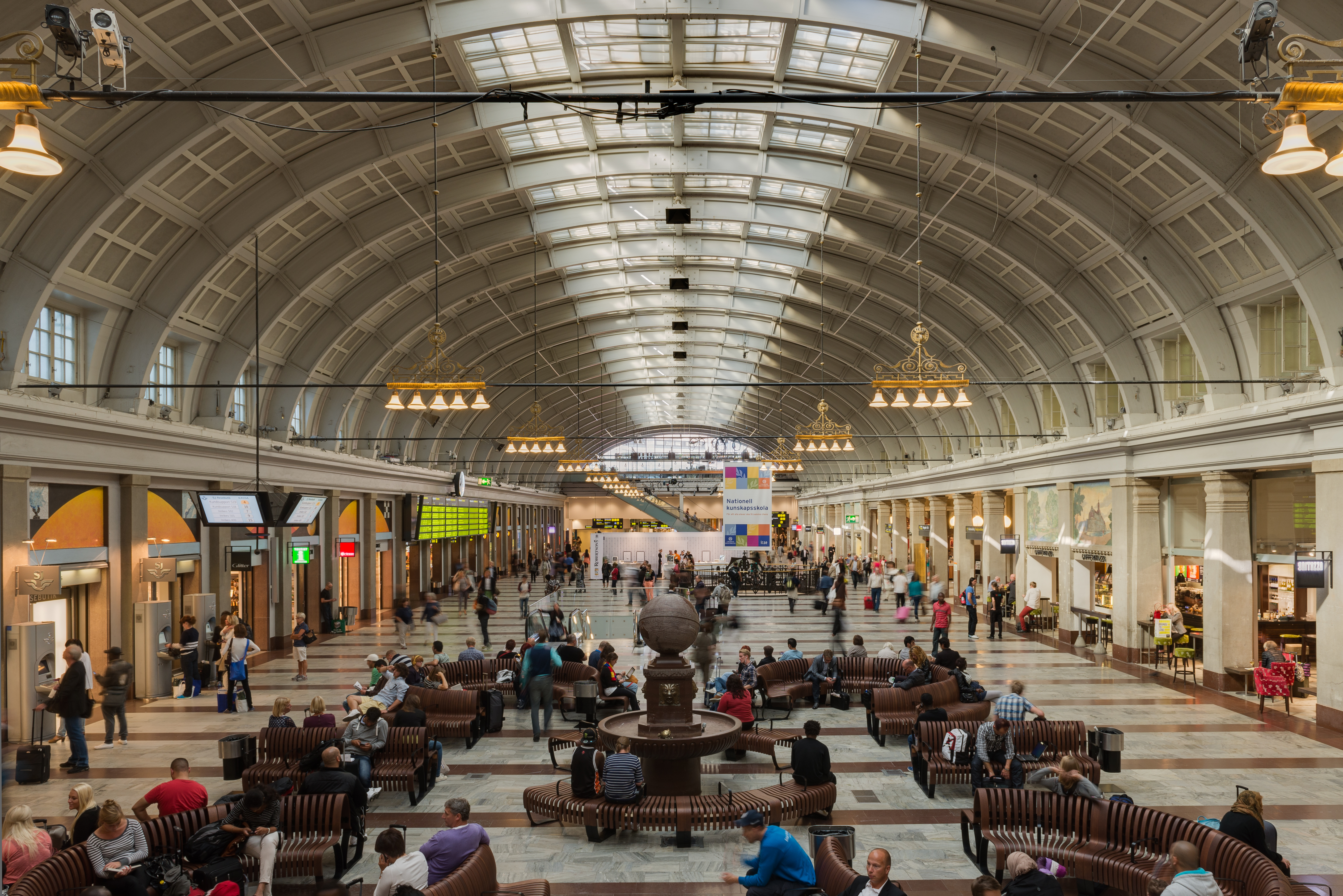
An average of 250,000 people passed through Stockholm’s Grand Central Station every day. Every human activity inside the station – walking, running, buying newspapers, purchasing coffee, even talking – generates heat that can be used to create warmth.
Lifestyle = Energy
What if we could capture the energy we produce by doing normal activities and use it to generate electricity? Sustainable Dance FloorTM already does that by integrating dance and energy generation. The concept and technology originated with a company called Energy Floors (formerly Sustainable Dance Club), and with the work of Studio Roosegaarde, using the floor has become even more fun. Today, the company has installed the energy-generating floor at more than 350 venues and events including nightclubs, concerts, expos and the Olympics. In 2012 alone, Sustainable Dance FloorTM generated over 2 billion joules of energy with the participation of more than 950,000 people.

The energy generated by each dance move is shown in real time via a battery symbol on an LED screen. The captured energy is used to power the colored LED lights on the floor, enhancing dancers’ enjoyment and keeping them motivated.
Photo credit: Energy Floors (energy-floors.com)

Sustainable Dance FloorTM uses Piezoelectric technology to convert the kinetic energy generated by people’s movements into electricity. The floor is made up of 75 x 75 x 20 cm modules, each of which can produce as much as 35 watts of sustained output (5 - 20 watts per person), enough to charge a smartphone or digital camera.
Photo credit: Energy Floors (energy-floors.com)
Nature = Energy
What if the trees on our streets could also serve as street lights? Project Glowing Nature makes trees glow at night by applying a fine coating of bio materials that mimic the light-emitting properties of mushrooms and jellyfish. Trees that receive the treatment produce light for up to 8 hours. A collaboration between Dr. Alexander Krichevsky, founder of biotech company Bioglow, Dutch innovator Daan Roosegaarde and the State University of New York, Project Glowing Nature opens up new possibilities for a future landscape in which nature provides all the lighting we need.

Starlight Avatar™ The light-emitting trees that Bioglow created for Project Glowing Nature were inspired by this bioluminescent prototype, whose trunk and leaves glow in the dark. Starlight Avatar™ was created by introducing the light-emitting pathway from marine bacteria into the chloroplasts of a common ornamental indoor plant.
Photo credit: Studio Roosegaarde (studioroosegaarde.net)

Currently, the Glowing Nature project is working on a more efficient, nature-based bioluminescent material and testing it on large mature trees to create a landscape of magical beauty.
Photo credit: Studio Roosegaarde (studioroosegaarde.net)
Movement = Energy
What if every human movement could be used to generate light? The Shell Football Pitch, an outdoor pitch in the Morro da Mineira neighborhood in Rio de Janeiro, Brazil, converts football players’ footsteps into electricity. Working alongside solar panels, 200 custom-made tiles made from plastic and waterproof, recycled rubber capture vibrations from footballers’ on-pitch movements and converts them into enough electricity to generate electricity up 10 hours of light . A partnership between Piezoelectric technology pioneer Pavegen and Shell, the football pitch successfully channels Brazil’s passion for football into efficient energy use.

Besides keeping the pitch itself well-lit, the electricity generated by the Shell Football Pitch also powers the surrounding lights, a definite plus for a neighborhood with frequent power outages. The tiles underneath the turf are connected to a wireless Application Programming Interface (API) for the collection and display of real-time data.
Photo credit: Pavegen (www.pavegen.com)
Storable Energy
What if we could store solar energy for use at any time? Tesla Powerwall is a smart home-based energy storage device that charges using power from solar panels or from the grid and can be used as a backup electricity supply. A product of U.S. electric car leader Tesla Motors, the Powerwall represents imaginative thinking about energy use in the home.

The energy stored in Tesla Powerwall can be used at any time, to power the home or to charge an electric car. It is designed to be mounted on a wall and can be installed in or outdoor.
Energy Efficiency & Design Thinking
Energy efficiency doesn’t simply mean energy saving. Rather, it means using less energy to achieve the same results, quantitatively and qualitatively.
Design Thinking can serve as a tool for creating new innovations and services that make energy efficiency possible. In essence, Design Thinking involves laying out a new framework for the problem, posing a hypothesis, gathering data and evidence, finding a pattern in those data, posing questions and then finding a viable conclusion within the established scope.
Now that we understand that saving energy doesn’t necessarily translate to energy efficiency, let us use Design Thinking to find ways to make energy users voluntarily reduce their usage, and to accomplish that without requiring them to give up the lifestyle to which they have become accustomed.
Understanding Energy Personas
To understand household-sector energy users’ attitudes, needs, behaviors, perception and experiences in energy usage, we utilized Design Research Tools including observation and in-depth interviews to gain insights from research participants. We then used research data to create 6 Energy Personas, whose perspectives and lifestyles reflect different values and energy-use behaviors.
Get to know our Energy Personas, whose stories will help you create efficient, diverse and comprehensive energy ideas.
InsightsKeeping in mind that what energy users say is often not what they think, and what they think is often not what they do, we obtained from research data the following insights:
- Regardless of how much energy they consume, users already have some awareness about energy saving.
- Energy doesn’t rank among the top priorities in their lives.
- Context and environment have an impact on their daily energy usage.
- Achieving energy efficiency requires cooperation from people around the user.
- Energy and energy expenses are intangible matters; to make sense, they need to consider in relation to other things.
The Big Spenders
Middle-aged couple and their teenaged children, a boy and a girl, live with their housekeeper in a large house in the suburbs with a full range of amenities and appliances.
For the Big Spenders, comfort always comes first. It is little surprise, then, that each of them thinks nothing of wasting energy on their activities of choice, which they will do anytime they please. Leaving the lights and air conditioning on is no big deal; what matters is physical and emotional comfort. The mother of the family wants to control the energy consumption at home, but there is nothing she can do given the lack of cooperation from the rest of the household, who never give a thought to how much their monthly energy bill costs.


The Planet Lovers
Hipster couple, both 28, work in design and creative jobs, live in a central-district low-rise condo surrounded by greenery.
The Planet Lovers associate energy, a complex issue, with the environment. Not only do they have a strong conviction that energy will never run out if we use it in an environmentally friendly manner, they also live and breathe sustainability. Both enjoy posting and sharing energy-saving tips with their friends and leading others in activities designed to reduce energy use, from taking up bicycling to switching to “green’’ fabric shopping bags to planting trees. It will be even better, however, if they would understand that driving their hybrid car to shop for organic produce at their neighborhood store every weekend doesn’t really do much for their energy-saving cause.
The Energy Seeker
Female college student, 20, moved to the city for her studies. She pays for everything out of her own pocket, including rent, food and her daily commutes. The more time she spends at her dorm, the higher her energy bill.
The Energy Seeker depends on the Internet for her studies and work as well as for news and social- media entertainment. What she needs is a place where she can sit and work, watch a movie or listen to music, with power outlets for her notebook, mobile phone and power bank, unlimited free Wi-Fi and free air-conditioning. Even if she has to shell out for food and drinks at such a place, she feels it’s worth it and better than going home to her dorm and driving up her electricity bill.

Mr. Efficiency
Overseas-educated architect and energy expert, 38. Grew up in a family that knew how to design and plan their daily energy use. Has solid knowledge and understanding of energy efficiency.
For Mr. Efficiency, his energy usage must fulfill all of his lifestyle needs, including comfort, spending objectives, happiness and peace of mind. So he uses hi-tech gadgets to plan his transport route and mode before leaving home. To him, driving, carpooling, bicycling or using mass transport is all fine as long as it is the best way to fulfill his needs.

Ms. Go-with-the-Flow
Government-sector employee, aged 35, lives in a large Government Housing Authority flat. She believes wholeheartedly in the energy information she gleans from radio and TV and from the first-hand experiences of her colleagues and neighbors.
Ms. Go-with-the-Flow’s energy use behavior is influenced by the media and people around her. She believes it when others say something is good, and she will do what others say she should. Not only does she take it upon herself to make sure that air conditioning is turned off during lunch break as per the office circular, she also doesn’t hesitate to turn off all the lights in her home for one minute as per the light-out campaign she heard about on TV. Using appliances that her friends use or recommend gives her the same feeling of fulfillment and confidence as seeing a TV commercial plugging an appliance’s cost-effectiveness.

The Opportunist
Boutique hostel owner, 40, sees energy use as an investment. Accurate news and information is essential for making the right decision in a business driven 24/7 by energy.
The Opportunist educates himself about energy. He has run the numbers on the returns he can expect from upgrading his building to accommodate efficient alternative energy systems. Cost-effectiveness and returns on investment are key considerations for him. But although big energy bills indicate high occupancy at his hostel, he doesn’t shy away from putting Reduce Global Warming stickers on guestroom light switches. That might put a little dent in his electricity bill, after all.
Design Innovations & Energy Ideas
The experimental ideas, innovations and services you see here are part of many examples that reveal the possibility of harmoniously incorporating energy efficiency into everyday life.
OpportunitiesTo turn insights into “opportunities” and ensure the creation of user-centric ideas with potential for both business and technological applications, consider the following questions:
- How to make energy efficiency part of your way of life?
- How to change your environment to facilitate energy efficiency?
- How to manage the people around you to facilitate energy efficiency?
- How to make energy a visible and easily understandable issue?
- How to make energy a tangible issue in order to build conviction and confidence?
Nest Thermostat
To ensure that the home air conditioning system is responsive to the homeowners’ behavior, Nest Thermostat is designed to learn the homeowners’ patterns of use and then use the statistics it has collected to adjust the temperature inside the home to fit the homeowners’ lifestyle. Nest utilizes multiple sensors to determine the number of people in the room and uses that to decide whether to turn the air conditioning up or down, or whether to turn it on or off without the homeowners’ having to lift a finger. The device also displays electricity usage and temperature in real time via an application. Nest Thermostat uses technology by Nest Lab, which is owned by Google’s parent company, Alphabet.
Energy Area Map
Conceived as a response to the public’s growing energy addiction, the Energy Area Map makes energy availability its selling point. The map provides information on the numbers of power outlets and Wi-Fi hotspots at area coffee shops alongside information on food, beverages and service. Users can use the information to make decision, leave a review and rate the establishments they have visited, making the map a solution for both business owners and customers. With Energy Area Map, electricity becomes a worthwhile add-on service to the shop’s food and beverages offerings. The Map is an idea gleaned from TCDC’s Survey of Discourse on Energy Sharing in Public Spaces and Media-Assisted Campaigns.

OPOWER
Designed to make energy saving fun, OPOWER encourages participation via competition. The platform promotes energy efficiency by allowing users to compare their energy use with similar households’. Using apps and software to connect the electricity meters of all households in its network, OPOWER also provides monthly usage rankings. Created by a software company that caters to energy providers in the US, OPOWER is a collaboration between engineers, information scientists, designers and psychologists and draws on a basic human trait: competitiveness.



Home Smart Home
Conceived as a way to make the cost of energy more visible and easier to understand, the Home Smart Home concept connects all facets of living with electricity – appliances, home electricity meter, payment system. The system can be used to control home appliances, check each appliance’s energy usage in real time and even pay your electricity bill via a smartphone app. It can be installed in a housing estate to create value-added for the development and increase the energy efficiency of all the homes in it. The Home Smart Home system is the brainchild of the Design Thinking Energy workshop, organized by Thailand Creative and Design Center (TCDC) in cooperation with HUBBA Thailand.
Energy Lottery
Catering to Thais’ love of games of chance, the Energy Lottery concept adds a lifestyle incentive to the idea of energy efficiency. Participants can take the money they save by cutting back on their electricity use and spend it on the Energy Lottery, which entitles them to win cash and non-cash prizes. Winners are found through monthly lottery draws, which are broadcast on TV to motivate the public to adopt more energy-efficient lifestyles. The Energy Lottery concept is a product of the “Design Thinking for The Future of Thailand Energy” workshop by Thailand Creative & Design Center (TCDC).
Learn more about “Design Thinking for The Future of Thailand Energy” workshop
Project Sunroof
Project Sunroof aims to make information about solar energy investments more accessible to the public and increase confidence in such investments. It is designed to connect with the Google Earth satellite system and draw on information from its aerial maps database to calculate and display the exact amount of sunlight a home or building receives each year. The system also runs calculations on the cost-effectiveness of investing in home solar panels and offers information on nearby solar panel providers as well. A pilot project by Google, Project Sunroof is being developed and tested in several locations around the U.S., including Boston, Fresno and the San Francisco Bay Area.
HERE Maps
To help users get to their destinations in the most efficient way possible, HERE Maps is designed to calculate the fastest way to get from point A to point B. The smart mapping application displays information and traffic routes visually and audibly, and provides up to 4 route choices to allow users to switch to a less congested road if they run into traffic jams. HERE Maps is available offline, so users can pull traffic info and statistics from the cloud without having to connect to the Internet. HERE Maps is designed by Nokia.
Circular Economy Lightbulb
Technology can lead to better efficiency. The Circular Economy Lightbulb was conceived not as a product but as a service. The innovative idea of charging a fee for upgradable LED lights stems from the fact that the manufacturing of these lightbulbs involves a complex process and use of rare raw materials, and that at the end of their life, the bulbs tend to be thrown out rather than recycled. By design, the Circular Economy Lightbulb features a removable core and internet connectivity. When some part needs to be replaced, an efficiency upgrade will be delivered to the customer. A prototype concept by the UK design studio The Agency of Design, the Circular Economy Lightbulb is funded by Innovate UK.
Become a Design Thinker
It is time to brainstorm and explore new ways to energy efficiency.
The key to concept development is jointly building on the ideas and opinions of all the people involved. Exchanging ideas and working together as a team not only leads to a sense of ownership but also opens the way to the co-creation of new ideas that directly answer existing needs.
TCDC Design Thinking Workshops
“Design Thinking for The Future of Thailand Energy,” a workshop by TCDC, and “Design Thinking Energy,” a workshop by TCDC in cooperation with HUBBA THAILAND, provided ample proof that diversity and a user-centric approach are vital when you get energy users, designers, entrepreneurs, energy service providers and energy experts in the same room to learn and create new energy ideas together using the Design Thinking process.
Don’t forget to share your energy-efficiency ideas on Facebook Designing Energytopia or submit them in person at the Information Counter, TCDC or TCDC Chiang Mai.


































